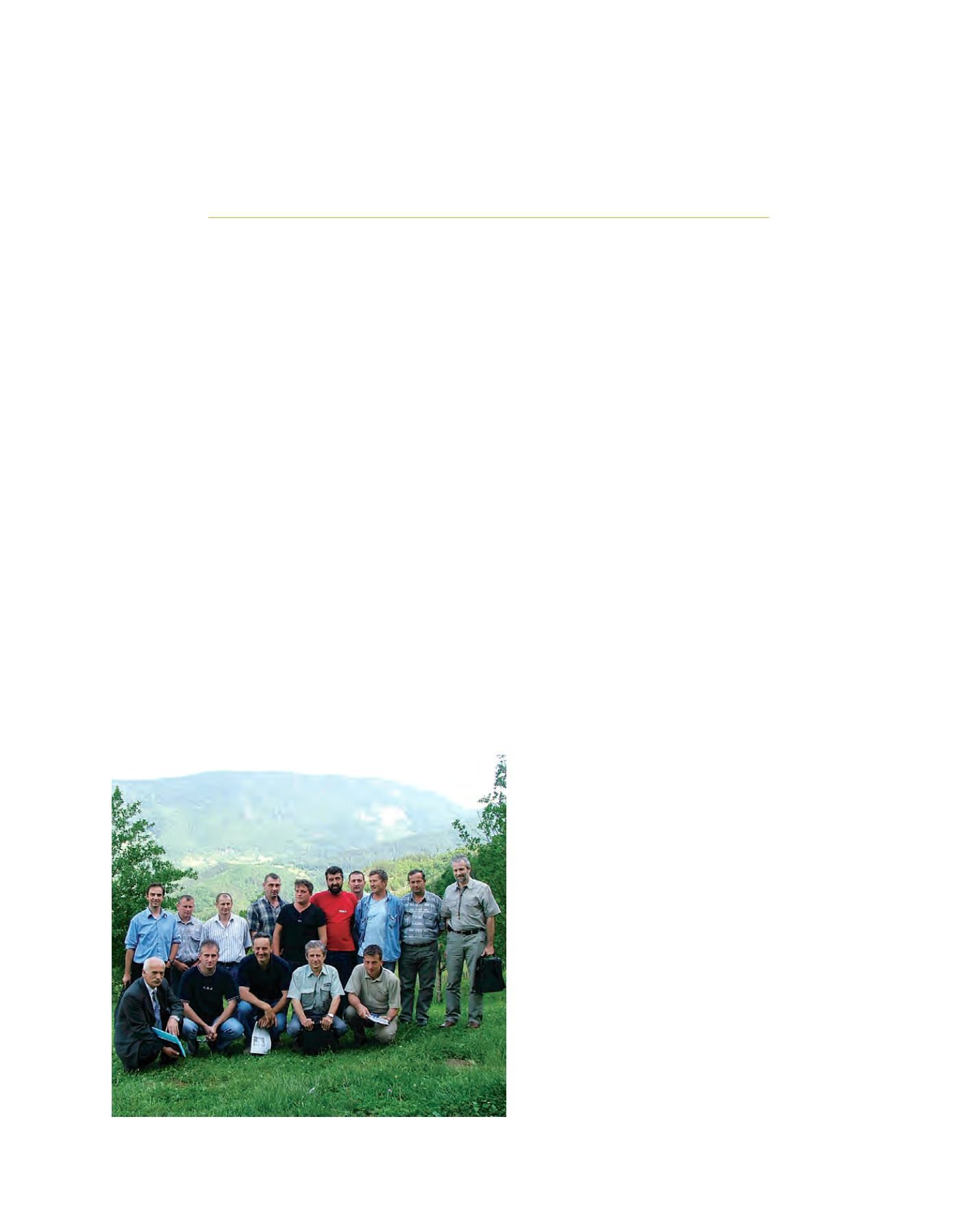

[
] 128
National forest policy and
programme development in Serbia
Predrag Jovi
ć,
National Forest Programme Focal Point and Dr Saša Orlovi
ć,
Director,
Ministry of Agriculture, Trade, Forestry and Water Management of Serbia – Directorate of Forests
A
national inventory of Serbia’s forests undertaken in 2008
showed that the country’s forests account for 29.1 per
cent of the territory. The total area occupied by forests
is 2,252,400 ha, with natural forests covering 621,000 ha (27.6
per cent), coppice type forests on 1,465,400 ha (64.6 per cent)
and 174,800 ha (7.8 per cent) accounted for by forest planta-
tions. Other cultivated land occupies 382,400 ha. The total area
of forests and forest-related land is 2,634,800 ha.
The total afforestation level of 29.1 per cent falls short of the optimal
percentage of 41.4 per cent to which Serbia aspires. In addition, the
volume (161 m
3
) and volume increment per ha (4 m
3
) are regarded
as insufficient. Almost two thirds of forests are coppice type and
conservation is lacking (there are 608,000 ha of dispersed forests
and 55,200 ha of devastated forests across 29 per cent of the forest
area). Age distribution in the natural forests is also very unfavour-
able (38 per cent young, 20 per cent middle aged, 13 per cent mature
and 29 per cent overmatured). In coppice forests, the respective
percentages are 51 per cent young, 33 per cent middle aged, 7 per
cent mature and 9 per cent overmatured).
Planned natural regeneration has not occurred in signif-
icant parts of the high forests covering an area of 268,000
ha, and poor health conditions prevail, especially in terms
of chronic decay of oak forests. Other problems include
unbalanced volumes of wood, forests affected by proxim-
ity to roads at a level of 11.86 metres per hectare, and
poor utilization of potential benefits of forests such as non-
wood forest products and biomass production.
State forests represent 53 per cent (1,194,000 ha) and
private forests 47 per cent (1,058,400 ha) of the total
ownership of forests. Small private forests represent
a significant problem for efficient forest management
under the current forest policy. The estimated number
of private forest owners (PFOs) is 900,000 and forest
property size per owner is approximately 1.27 ha with
3,900,000 parcels of an average size of 0.30 ha. More
than 72 per cent of owners have properties smaller than
1 ha, 26 per cent own property between 1 and 10 ha,
and only 2 per cent of forest owners have forest proper-
ties larger than 10 ha.
In sum, the private forest sector in Serbia is char-
acterized by high fragmentation of properties, a large
number of parcels and owners, and insufficient organi-
zation of forest management. Whatever their size, the
significant timber volume and annual increments in
privately owned forests are similar to those of the state
forests, emphasizing their importance as a resource.
State policy measures stimulate PFOs to organize
themselves in local owners’ associations in order to
achieve their mutual and individual goals. In addition,
the national association (created in 2010) needs to act
as a strong body across a wider area in order to establish
cooperation regarding the key concepts and measures
of forest policy and to provide technical support to the
activities of local associations.
Numerous workshops for PFOs during the develop-
ment of the Forestry Development Strategy and National
Forest Programme (28 workshops in total) have resulted
in increased interest in working together. From 2006,
private forest owners’ associations (PFOAs) were formed
in different parts of Serbia and today there are 17 such
organizations. Individual owners manage their own
forests, while the association coordinates joint activities
such as forest infrastructure and joint marketing activi-
Private forest owners’ association in the village of Rastiste (Mt. Tara, Western Serbia)
Image: MATFW Serbia
















